Hypervelocity impact of granular materials, such as sandstone, is important to both defense and industrial applications. For example, in the oil industry small shaped charges are used to perforate through steel wellbore casing into reservoir rock to provide conduits through which to extract hydrocarbons.
This activity aimed to gain insight that is unavailable experimentally by carrying out meso-scale Uintah simulations of high speed impact of tungsten particles into a three-dimensional collection of quartz grains, meant to represent (by size distribution and volume fraction) Berea sandstone. The results obtained so far show that although two-dimensional simulations provide some insight into what we believe is truly a three-dimensional phenomena, there are significant differences from experiments. As such,it is necessary to do at least a subset of these simulations in three-dimensions to provide a point of reference for relating the two-dimensional results to reality.
Small shape charges are used to perforate through steel wellbore casings into reservoir rock to provide conduits for extracting hydrocarbons. Two dimension simulation of a high speed impact of tungsten particls into a collection of quartz grains representing Berea sandston showing the intial and final impact effects. These simulation have been useful in observing the collapse of porosity and variations in depth of penetration due to changes in initial conditions.
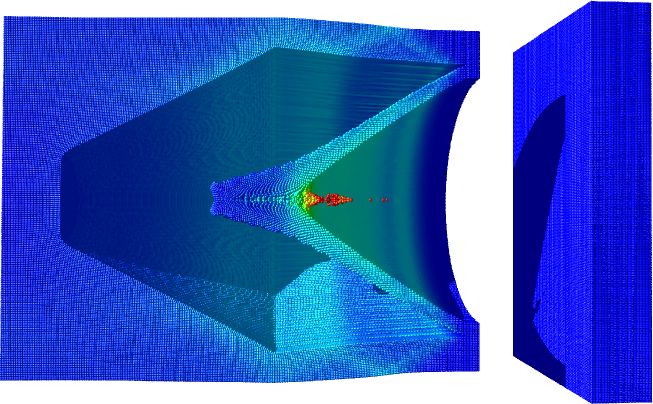 |
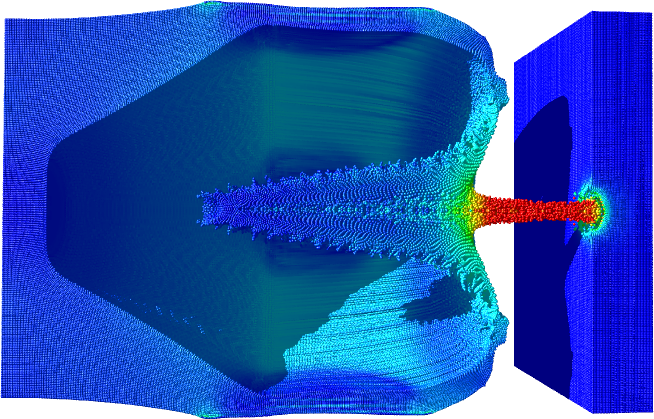 |
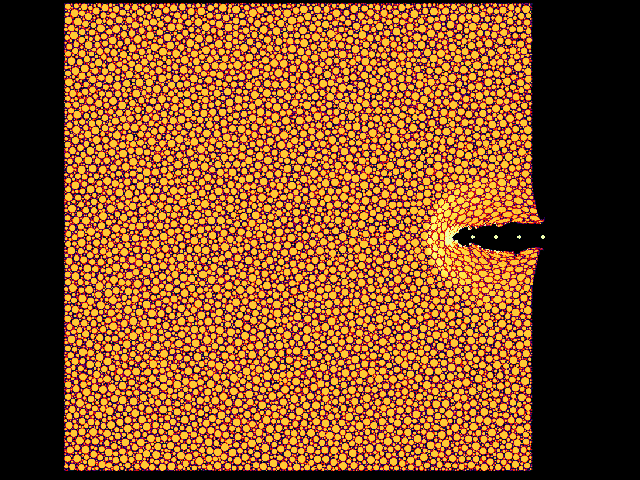 |
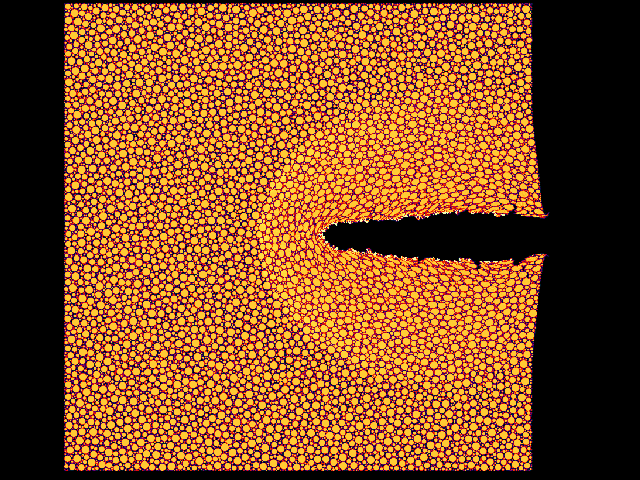 |
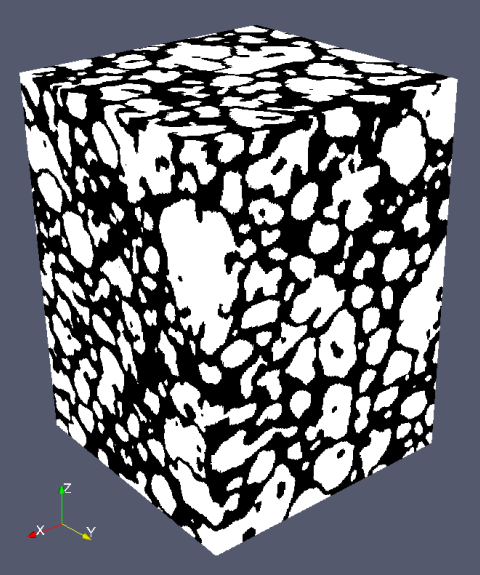 |
|
